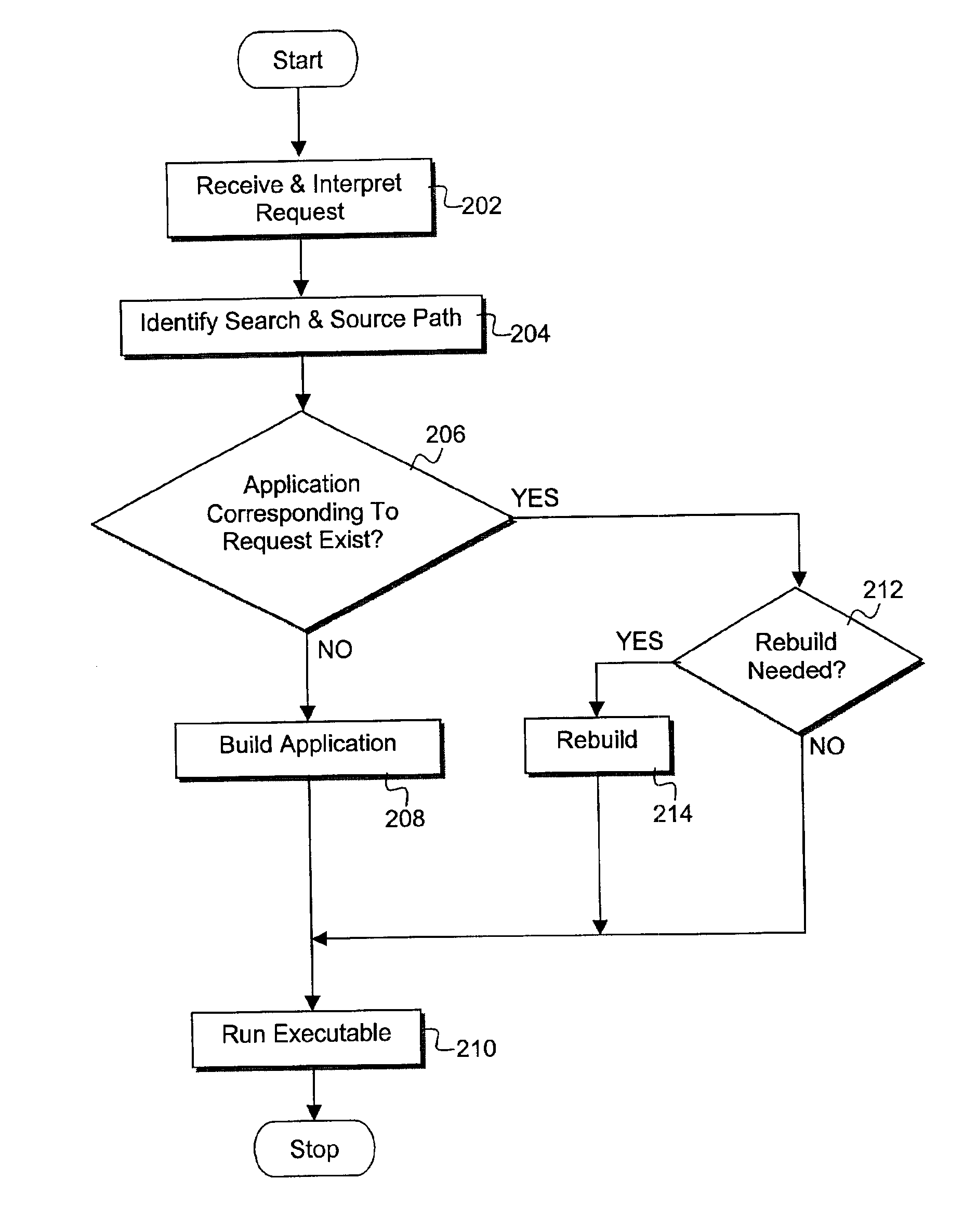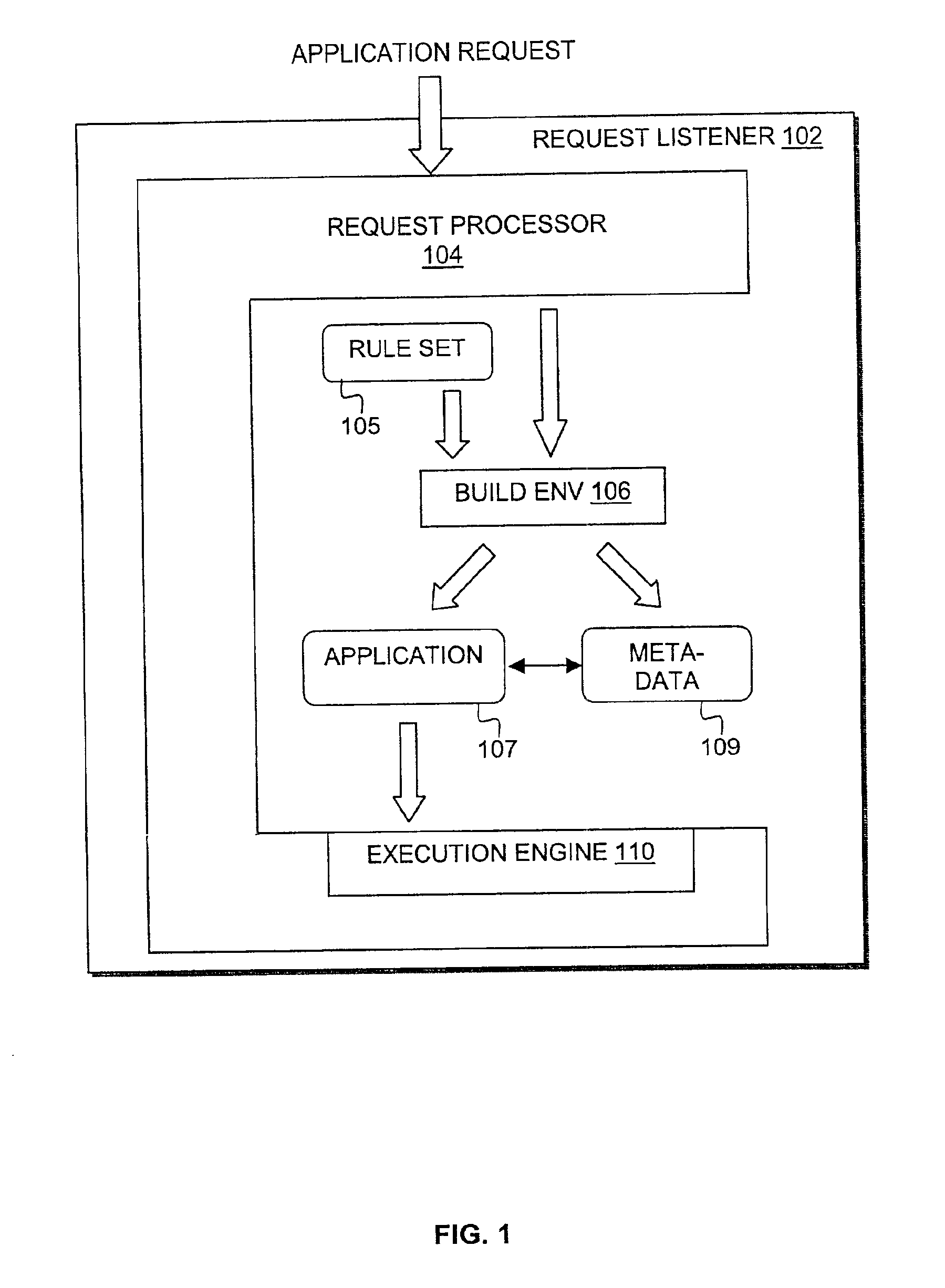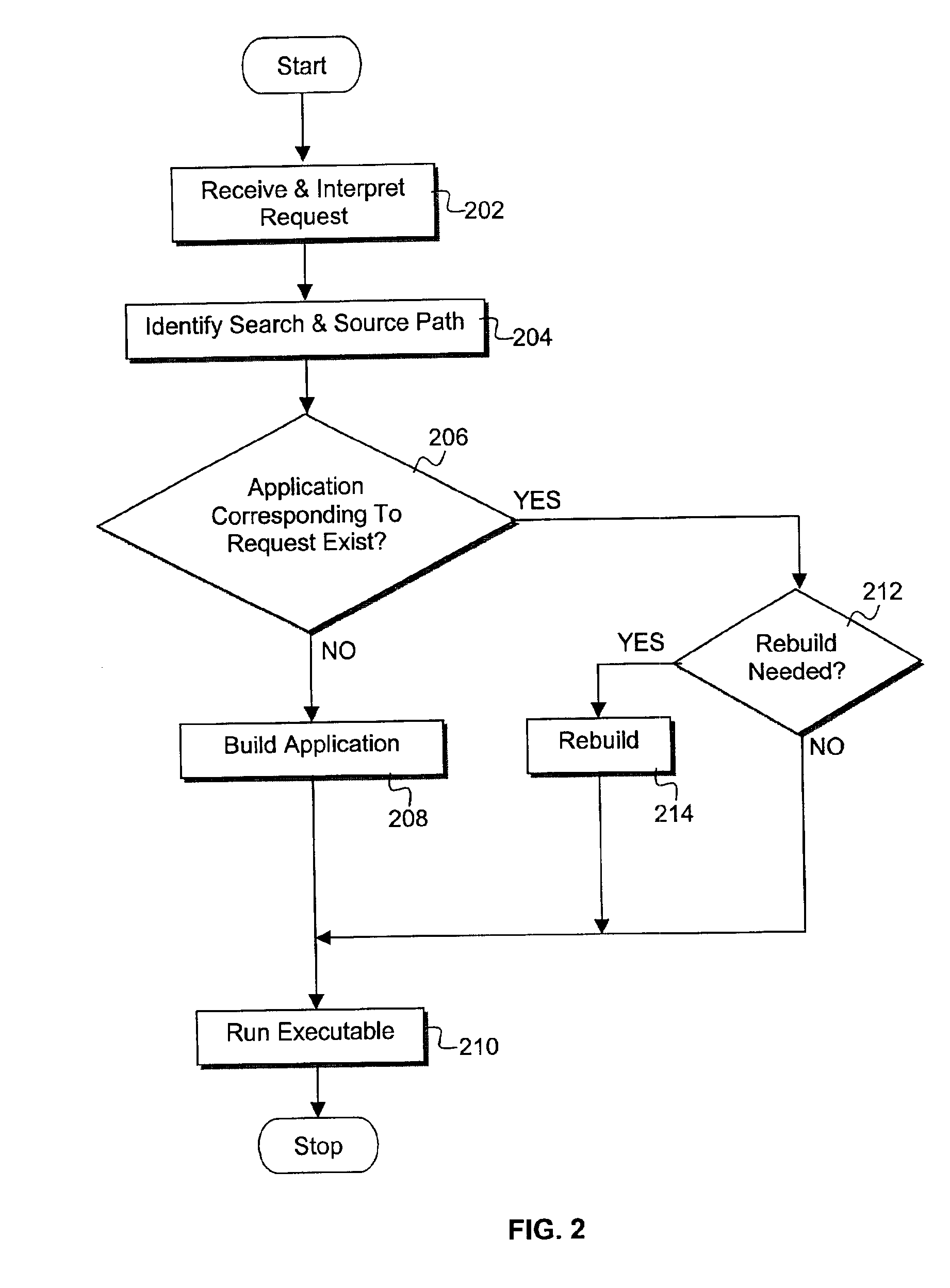Iterative software development environment with prioritized build rules
a software development environment and build rule technology, applied in the field of iterative software development environment, can solve the problems of accumulating build and deploy time, unable to quickly determine whether a rebuild is needed, and the process of rebuilding, deploying and testing complex software projects can be tedious and time-consuming
- Summary
- Abstract
- Description
- Claims
- Application Information
AI Technical Summary
Benefits of technology
Problems solved by technology
Method used
Image
Examples
example application
[0029]FIG. 6 is a block diagram illustrating one embodiment of the present invention. In FIG. 6, remote client 601 sends HTTP based requests over network 600 to web server 615, incorporating the teachings of the present invention. Web server 615 represents a host of one or more Java based web services that are made publicly accessible to remote clients such as client 601. In one embodiment, the request provides a URL that indicates a publicly accessible resource on web server 615. In one embodiment, the URL is used to identify the name of an application used to implement the web service of the illustrated embodiment and a deployment descriptor containing a search path and source path.
[0030]In one embodiment, the request is received by servlet container 602 and processed by servlet 604. In one embodiment, servlet 604 represents a servlet designed to receive web service requests and parse the requests to identify the application required to respond to the request. In one embodiment, s...
PUM
 Login to View More
Login to View More Abstract
Description
Claims
Application Information
 Login to View More
Login to View More - R&D
- Intellectual Property
- Life Sciences
- Materials
- Tech Scout
- Unparalleled Data Quality
- Higher Quality Content
- 60% Fewer Hallucinations
Browse by: Latest US Patents, China's latest patents, Technical Efficacy Thesaurus, Application Domain, Technology Topic, Popular Technical Reports.
© 2025 PatSnap. All rights reserved.Legal|Privacy policy|Modern Slavery Act Transparency Statement|Sitemap|About US| Contact US: help@patsnap.com



